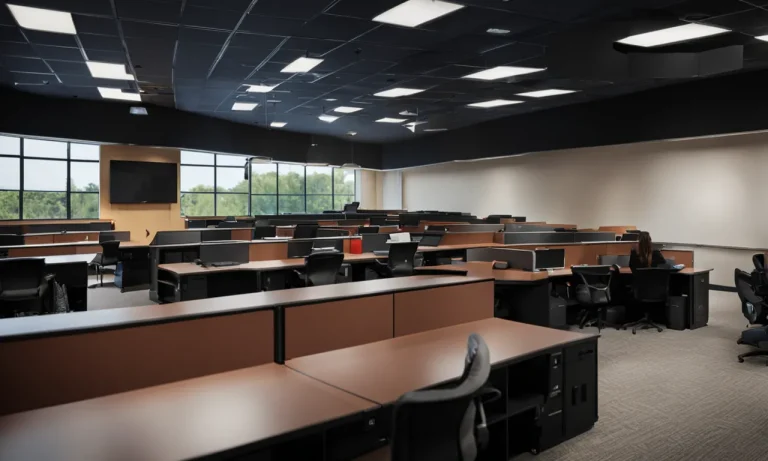Self defense is an instinctual human reaction to physical threats and aggression. However, many schools have zero tolerance policies that punish any form of violence, including acts of self defense. This seemingly contradictory stance often leaves students and parents frustrated and looking for answers.
If you’re short on time, here’s a quick answer to your question: Schools punish self defense because of zero tolerance policies aimed at reducing overall school violence. However, these policies often fail to account for nuance and can unfairly target victims.
In this comprehensive article, we will examine the reasons why schools punish students for defending themselves, look at arguments for and against these disciplinary practices, and provide perspective on how to approach self defense issues in an educational setting.
The Prevalence of Zero Tolerance Policies in Schools
Zero tolerance policies have become increasingly prevalent in schools across the country. These policies were originally implemented in the 1980s, but became widespread in the 1990s as a response to the growing concerns about school safety and violence.
The intent behind zero tolerance policies was to create a safe and controlled learning environment for students, but they have since sparked debate and controversy.
View this post on Instagram
The History and Intent Behind Zero Tolerance
Zero tolerance policies were initially introduced as a means to address the rising incidents of violence and drug abuse in schools. The idea was to have strict and consistent consequences for any behavior that violated the established rules and regulations.
The intention was to send a clear message that certain behaviors, such as possessing weapons or drugs, would not be tolerated under any circumstances.
However, over time, zero tolerance policies have expanded beyond their original purpose and have been criticized for their inflexibility and harsh consequences. Critics argue that these policies often result in disproportionate punishments for minor infractions, leading to a school-to-prison pipeline phenomenon where students are funneled into the criminal justice system.
Proponents of zero tolerance policies believe that they create a deterrent effect and help maintain a safe and orderly learning environment. They argue that by implementing strict consequences for any form of misconduct, schools can send a strong message that certain behaviors will not be tolerated.
How Zero Tolerance Applies to Self Defense
One area where zero tolerance policies have generated controversy is when it comes to self-defense. Many schools have implemented policies that prohibit any form of physical violence, even in cases where a student is defending themselves against an attacker.
This has raised concerns about the fairness and effectiveness of such policies.
While the intention behind these policies is to discourage violence and promote peaceful conflict resolution, critics argue that they fail to take into account the complexities of real-life situations.
They argue that punishing students for defending themselves can create a dangerous environment where victims are discouraged from protecting themselves.
It is important to note that self-defense is a fundamental right and should be protected, even within the school setting. Schools should aim to strike a balance between promoting non-violence and ensuring the safety and well-being of their students.
This might involve implementing alternative disciplinary measures that take into account the unique circumstances of each situation.
Ultimately, the prevalence of zero tolerance policies in schools and their application to self-defense is a complex issue that requires careful consideration. Schools should strive to create safe learning environments while also recognizing the importance of individual rights and the unique circumstances that may arise in self-defense situations.
View this post on Instagram
Arguments For Punishing Self Defense at School
Maintaining Order and Reducing Disruption
One of the main arguments for punishing self-defense at school is the need to maintain order and reduce disruption. Schools are responsible for ensuring a safe and conducive learning environment for all students.
Allowing self-defense actions can potentially lead to chaos and escalate conflicts, making it difficult for teachers and staff to maintain order. By punishing self-defense, schools aim to discourage students from taking matters into their own hands and encourage them to seek help from teachers or other authority figures instead.
Moreover, having a clear policy against self-defense can help prevent the development of a vigilante culture within the school. Students should be encouraged to report incidents to the appropriate authorities rather than resort to physical confrontation.
Limiting Liability and Legal Risks
Another reason schools punish self-defense is to limit liability and legal risks. When students engage in physical altercations, there is a higher chance of injuries occurring, which can lead to legal consequences for the school.
By discouraging self-defense and promoting non-violent conflict resolution methods, schools aim to protect themselves from potential lawsuits and ensure the safety of all students.
Furthermore, schools have a duty to provide a safe environment for students, and by punishing self-defense, they are taking steps to fulfill that duty. This can also help prevent situations where students may falsely claim self-defense to justify their aggressive actions and avoid disciplinary consequences.
Discouraging Further Violence
Punishing self-defense at school is also seen as a way to discourage further violence. When a student takes matters into their own hands and uses physical force to defend themselves, it can escalate the situation and potentially lead to a cycle of violence.
By punishing self-defense, schools aim to break this cycle and promote alternative conflict resolution strategies, such as mediation or counseling.
It is important to note that schools should also address the underlying causes of aggression and violence, such as bullying or social conflicts, to prevent situations where self-defense becomes necessary.
Creating a positive and inclusive school culture can greatly contribute to reducing the need for self-defense actions in the first place.
View this post on Instagram
Arguments Against Punishing Self Defense at School
Self-defense is a basic instinct that kicks in when an individual feels threatened or in danger. However, it is unfortunate that some schools choose to punish students who defend themselves in the face of bullying or physical violence.
This article explores the arguments against punishing self-defense at school and highlights the need for a more empathetic and understanding approach.
Unfair Treatment of Victims
Punishing students who defend themselves sends a message that the victims of bullying or violence are somehow at fault for protecting themselves. This unfair treatment not only adds insult to injury but also fails to address the underlying issue of aggression in schools.
Instead of penalizing students who stand up for themselves, schools should focus on creating a safe environment where all students feel protected and supported.
Ignoring Context and Nuance
One of the main problems with punishing self-defense is the failure to consider the context and nuances of each situation. Every act of self-defense is unique and should be evaluated on its own merits.
What may appear as aggression to an outsider might actually be a necessary response to protect oneself from harm. By punishing self-defense without taking into account the circumstances, schools risk further victimizing the very students they are meant to protect.
Contradicting Basic Rights
Punishing self-defense contradicts the basic rights of individuals to protect themselves. Every person has the right to feel safe and secure in their environment, especially within the confines of an educational institution.
By penalizing students for defending themselves, schools undermine these fundamental rights and erode the trust between students and the education system. It is crucial to prioritize the well-being and safety of students by allowing them to exercise their right to self-defense.
View this post on Instagram
Creating Nuanced Policies on Self Defense
When it comes to self-defense in schools, there is a need for nuanced policies that strike a balance between safety and allowing students to protect themselves. While it is important to maintain a safe learning environment, punishing students for defending themselves can send the wrong message and potentially discourage self-advocacy.
By implementing policies that prioritize reasonableness, de-escalation techniques, and training on safe restraint, schools can create a safer and more empowering environment for students.
Allowing Reasonable Self Defense
One way to create a more nuanced policy on self-defense is by allowing students to engage in reasonable self-defense. This means that students should be able to protect themselves when faced with imminent harm or threat.
By empowering students to defend themselves within reasonable parameters, schools can promote a sense of personal safety and discourage potential aggressors.
It is important, however, to clearly define what constitutes reasonable self-defense. This can be done through comprehensive policies that outline specific scenarios and actions that are considered acceptable.
For example, a policy could state that physical force is only permitted as a last resort and should be proportionate to the threat faced by the student.
Focusing on De-escalation First
While allowing self-defense is important, it is equally crucial for schools to prioritize de-escalation techniques in conflict resolution. By teaching students how to defuse tense situations and communicate effectively, schools can empower them to resolve conflicts peacefully and minimize the need for physical intervention.
Implementing de-escalation training programs can be beneficial in equipping students with the necessary skills to handle conflicts in a non-violent manner. These programs can include teaching active listening, empathy, and conflict resolution strategies.
By focusing on de-escalation first, schools can create a culture of understanding and promote peaceful resolutions.
Providing Training on Safe Restraint
In situations where physical intervention is necessary, schools should provide training on safe restraint techniques. This training should be given to both staff and students to ensure that everyone is equipped with the skills to handle physical altercations safely and responsibly.
Safe restraint training should emphasize the importance of minimal force and avoiding unnecessary harm to all parties involved. By teaching techniques that prioritize the safety and well-being of both the student and the aggressor, schools can minimize the risk of injuries and potential legal consequences.
It is important for schools to consult with experts in the field of self-defense and conflict resolution when developing policies and providing training.
By creating nuanced policies on self-defense that prioritize reasonableness, de-escalation techniques, and safe restraint training, schools can foster a safer and more empowering environment for students.
These policies should strike a balance between maintaining a safe learning environment and allowing students to protect themselves when necessary. With the right approach, schools can create an atmosphere where students feel safe, supported, and empowered to advocate for their own well-being.
Conclusion
The debate around self defense in schools highlights the challenges of crafting disciplinary policies that account for safety, fairness and practical realities. While schools have an obligation to curb violence, they also need to approach incidents on a case-by-case basis with nuance, compassion and reason.
With collaborative efforts, clear guidance and an emphasis on de-escalation over punishment, schools can take a more balanced approach to regulating student conduct.
The bottom line is that while zero tolerance sounds good in theory, it often fails students in practice. Schools would do better to judge each act of violence, including self defense, based on context and circumstance.
This would help victims of bullying and violence feel supported, while still giving administrators discretion to handle truly dangerous situations.






